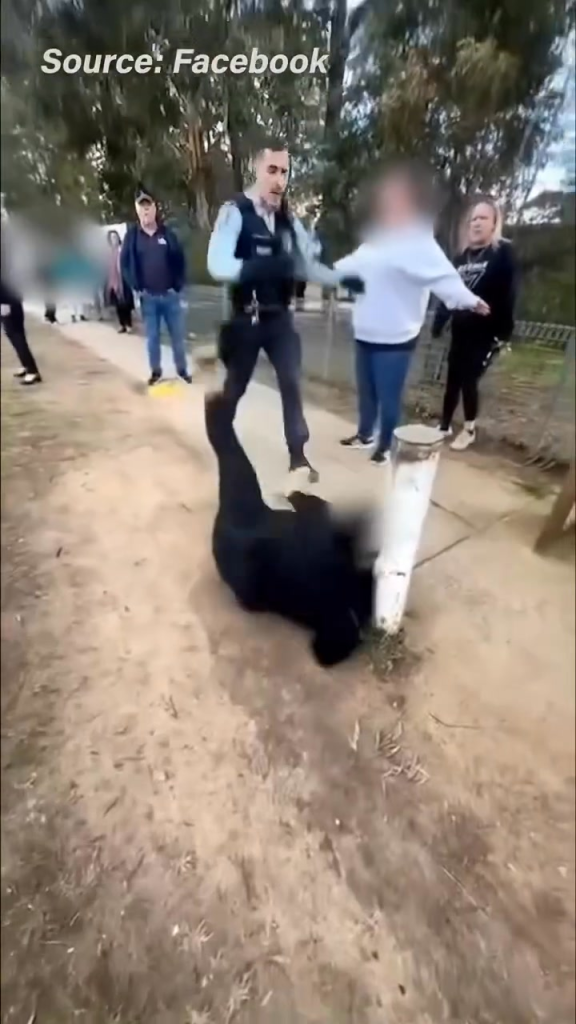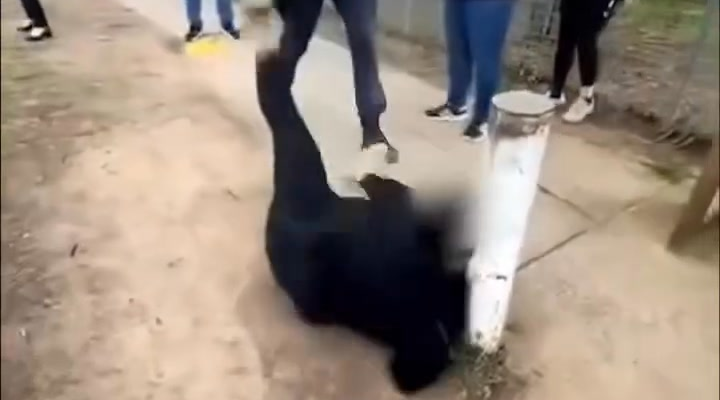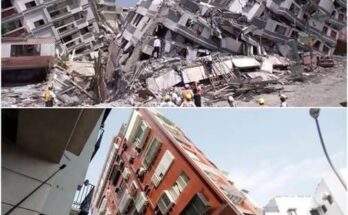Tensions Escalate at New South Wales High School: A Closer Look at the Viral Police Confrontation
Earlier this week, a high school in New South Wales became the center of widespread attention after a tense confrontation between a woman and local law enforcement was caught on video and circulated widely online. The incident, which began as a standard response to a student safety issue, quickly escalated, resulting in charges being filed and sparking national discussion on police conduct, school safety, and the reactions of communities when incidents occur on educational grounds.
The Calm Before the Storm
The day had begun like any other at the school. Teachers and staff were overseeing their usual routines, students were attending classes, and parents were dropping off children for the morning. But reports soon surfaced that students had been engaging in dangerous behavior near the school grounds, specifically throwing rocks at passing vehicles. Such actions pose immediate safety risks not only to drivers but also to pedestrians and other students in the vicinity.
Local authorities were contacted promptly. According to official statements, police officers arrived to investigate the complaints, aiming to assess the situation and ensure the safety of all involved. What seemed initially like a straightforward safety intervention, however, soon grew more complex as additional parties became involved.
The Arrival of the Woman and Rising Tensions
Eyewitness accounts indicate that as officers spoke with students allegedly involved in the rock-throwing, a woman—reported to be related to one of the students—arrived at the scene. While her exact motives remain a matter of discussion, she reportedly confronted the officers regarding how they were handling the situation. Some witnesses describe her tone as insistent and urgent, reflecting concern for the student’s well-being, while others noted that her approach may have inadvertently heightened tensions.
This interaction marked a turning point in the unfolding events. What might have been resolved quickly through dialogue instead became increasingly charged, as both parties attempted to assert control over the scene. Multiple bystanders captured the incident on mobile devices, resulting in video footage that has since circulated extensively online, drawing attention from both local residents and a broader national audience.
The Confrontation Caught on Camera
The video, which has been viewed and shared thousands of times, depicts the woman speaking directly with officers. Eyewitnesses describe the scene as tense, with voices raised and movements becoming more animated. At one moment, the footage shows an officer allegedly pushing the woman to the ground, eliciting audible reactions from students and onlookers nearby.
Reactions to the footage have been mixed. Many viewers express shock and concern at the apparent physical confrontation, while others debate the circumstances leading up to the moment. Some argue that officers were attempting to maintain order and prevent further risk, whereas others question whether the escalation could have been avoided through alternative methods of conflict resolution.
Community Reactions and Social Media Buzz
Following the release of the footage, local communities quickly became engaged in discussions about the incident. Parents, educators, and local residents expressed a range of emotions—from anger and disbelief to concern for student safety. Social media platforms became a hub for these conversations, with users weighing in on the actions of both the police and the woman involved.
Public figures, advocacy groups, and community leaders also commented on the broader implications. The incident prompted discussions on how law enforcement interacts with civilians in public spaces, especially in environments where children are present. Many emphasized the need for protocols that prioritize safety while minimizing confrontation.
Police Statement and Official Perspective
In response to the viral footage, local police issued an official statement. Authorities confirmed that officers had been responding to reports of students throwing objects at vehicles and that the situation escalated when a civilian intervened. Police highlighted that officers are trained to manage confrontational scenarios while maintaining public safety, and they stated that the matter would be handled according to established procedures. The woman involved was reportedly charged in connection with the incident, though details regarding the specific charges have been withheld pending ongoing investigations.
Police also emphasized that maintaining safety on school grounds is a shared responsibility. While officers have an essential role, school staff, parents, and community members are encouraged to communicate concerns proactively and to cooperate with authorities in ensuring the well-being of students.
Expert Opinions on School Safety and Law Enforcement
Education and safety experts note that incidents like this underscore the challenges schools face in managing student behavior and community interactions. Dr. Elaine Thompson, a specialist in adolescent behavior, observed that while teenagers sometimes engage in risky actions, early intervention and communication are crucial in preventing escalation. She added that parental involvement can be constructive but should be guided by collaboration with school staff and law enforcement rather than confrontational approaches.
Law enforcement analysts also weighed in, suggesting that officers often navigate complex dynamics in school settings, balancing the need for authority with sensitivity toward young people and concerned parents. They stressed the importance of de-escalation techniques, emphasizing verbal communication, active listening, and measured responses to maintain safety without resorting to unnecessary physical force.
Impact on Students and School Community
For students at the high school, the incident was more than a headline—it was a direct and unsettling experience. Witnesses reported that many students were frightened by the confrontation and the presence of video cameras capturing the event. Some expressed frustration over the disruption to their routine, while others reflected on the broader social and safety lessons stemming from the day’s events.
Teachers and school administrators have reportedly taken steps to address the aftermath, providing counseling and support for students affected by the incident. Emphasis has been placed on open communication, conflict resolution, and the reinforcement of safety measures around school grounds.
Media Coverage and Ethical Considerations
As the footage circulated online, media outlets covered the story extensively. However, responsible reporting has been essential in balancing public interest with sensitivity toward those involved. Ethical considerations include avoiding sensationalism, respecting privacy, and refraining from content that could encourage harassment or misinterpretation.
Journalists covering the story have highlighted the need for context, including the reasons behind the police intervention, the actions of the civilian, and the broader societal discussions about school safety and law enforcement engagement. By providing a comprehensive narrative, media coverage can help foster informed public discourse rather than inflame tensions unnecessarily.
Lessons Learned and Moving Forward
While the incident at the New South Wales high school may initially appear as a singular, dramatic event, it reflects larger themes that are relevant to communities everywhere. Key takeaways include the importance of proactive communication between parents, students, and school authorities; the necessity of de-escalation training for officers interacting with civilians in sensitive environments; and the broader societal responsibility to ensure safety in and around schools.
Community leaders have urged all parties to reflect on the events constructively. Parents are encouraged to maintain open lines of communication with schools, students are reminded of the importance of responsible behavior, and law enforcement agencies continue to review procedures for managing interventions in crowded, high-stress public settings.
Conclusion
The viral confrontation at the New South Wales high school serves as a reminder of how quickly ordinary situations can escalate and the importance of thoughtful, measured responses from all involved. While the footage has drawn significant attention, the underlying message emphasizes collaboration, safety, and responsible community engagement. As investigations continue, both officials and the public have an opportunity to learn from the incident and to implement strategies that minimize risk, maintain order, and foster a secure environment for students.




